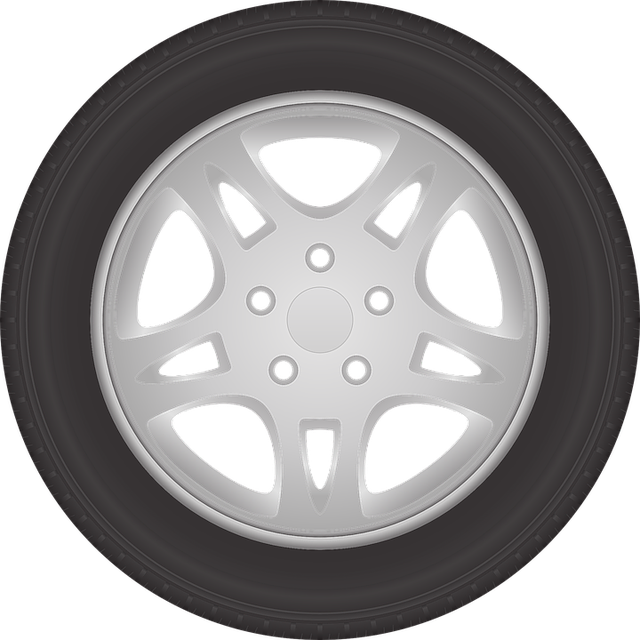Learn how to register your car in California with our comprehensive guide. This step-by-step process covers everything from understanding state requirements to gathering essential documents, passing a DVW VIN verification, completing the DMV application, paying fees, and securing your license plate. Ensure a smooth experience by following these clear instructions tailored for California residents.
- Understand California Car Registration Requirements
- Gather Necessary Documents for DMV Visit
- Perform VIN Verification: Steps & Tips
- Complete Application Process at the DMV
- Pay Registration Fees and Obtain Your Plate
Understand California Car Registration Requirements

Before registering your car in California, it’s crucial to understand the state’s specific requirements for vehicle identification number (VIN) verification. The California Department of Motor Vehicles (DMV) mandates a rigorous process to ensure the accuracy and security of all registered vehicles. One key step is the VIN inspection, which involves cross-referencing the unique 17-character VIN with the vehicle’s make, model, year, and other critical details.
This verification process can be completed through various methods, including traditional DMV visits or, for added convenience, mobile VIN inspections. These mobile services allow you to verify your car’s VIN from the comfort of your home or workplace, making it easier to initiate the registration process. By ensuring accurate VIN data, California residents contribute to a more efficient and secure vehicle registration system.
Gather Necessary Documents for DMV Visit

Before visiting the DMV to register your car in California, ensure you gather all the essential documents. This process typically requires proof of ownership, such as a bill of sale or previous registration papers, along with valid identification like a driver’s license. It’s also crucial to have the vehicle’s Vehicle Identification Number (VIN) available for verification. Many people choose to conduct a mobile VIN verification first to ensure all details match before heading to the DMV.
Additionally, you’ll need a current and valid emissions test certificate, which can be obtained through a certified inspection station. Some services offer convenient mobile vin inspection options, making it easier to prepare for your DMV visit. Remember, accurate documentation is key to a smooth registration process.
Perform VIN Verification: Steps & Tips

Performing a Vehicle Identification Number (VIN) verification is a crucial step when registering your car in California. This process ensures that the vehicle matches the details provided on the registration documents. The California Department of Motor Vehicles (DMV) recommends conducting a VIN inspection before submitting your registration application.
To start, locate the VIN on the vehicle’s frame or engine. Next, use a reliable mobile vin verifier to cross-reference the number with national databases. This step is essential as it helps prevent fraud and ensures you’re registering the right car. Make sure the tool you choose offers accurate results by comparing it with official resources like the DMV’s own systems. Additionally, consider factors like reporting any discrepancies found during the vin inspection to the appropriate authorities for further action.
Complete Application Process at the DMV

To complete the car registration process in California, you’ll need to go through a thorough application procedure at the Department of Motor Vehicles (DMV). The first step involves submitting the necessary documents, including proof of ownership, identification, and perhaps insurance information. Once your paperwork is in order, the DMV will conduct a Vehicle Identification Number (VIN) verification. This crucial process ensures that the vehicle matches the details provided on the registration documents.
A mobile vin verifier can be a convenient option for many, allowing you to complete this inspection from the comfort of your own home or location. The VIN inspection checks the authenticity of the vehicle’s identification number, which is unique to each car and provides vital information about its history. By using a mobile vin verification service, you streamline this step in the registration process, making it faster and often more efficient than traditional DMV procedures.
Pay Registration Fees and Obtain Your Plate

After completing your vehicle’s registration application at the California DMV, it’s time to pay the required fees. This typically includes a base registration fee and possibly additional charges based on factors like vehicle type and emissions status. Once your payment is processed, you’ll receive your vehicle’s unique Identification Number (VIN) verification. This critical step involves a thorough inspection of your car’s VIN, which is used to access important information about the vehicle’s history and ensure it complies with state regulations.
For a more convenient approach, consider utilizing a mobile vin inspection or mobile vin verifier service. These services offer on-demand, in-person VIN verification at your location, eliminating the need to visit a DMV office. A mobile vin verifier can perform the necessary checks and provide you with the confirmation needed to complete your registration process, ensuring a smoother and more efficient experience.
Registering a car in California involves understanding specific requirements, gathering essential documents, completing a straightforward application process, and paying corresponding fees. After your DMV visit, ensure proper vehicle identification number (VIN) verification for accuracy. With these steps and the right preparation, you’ll be driving legally on California’s roads in no time.
